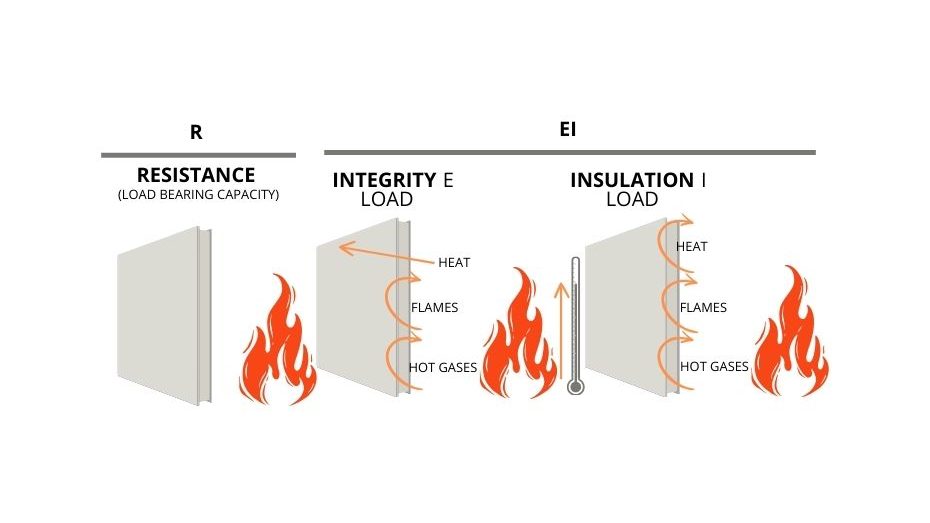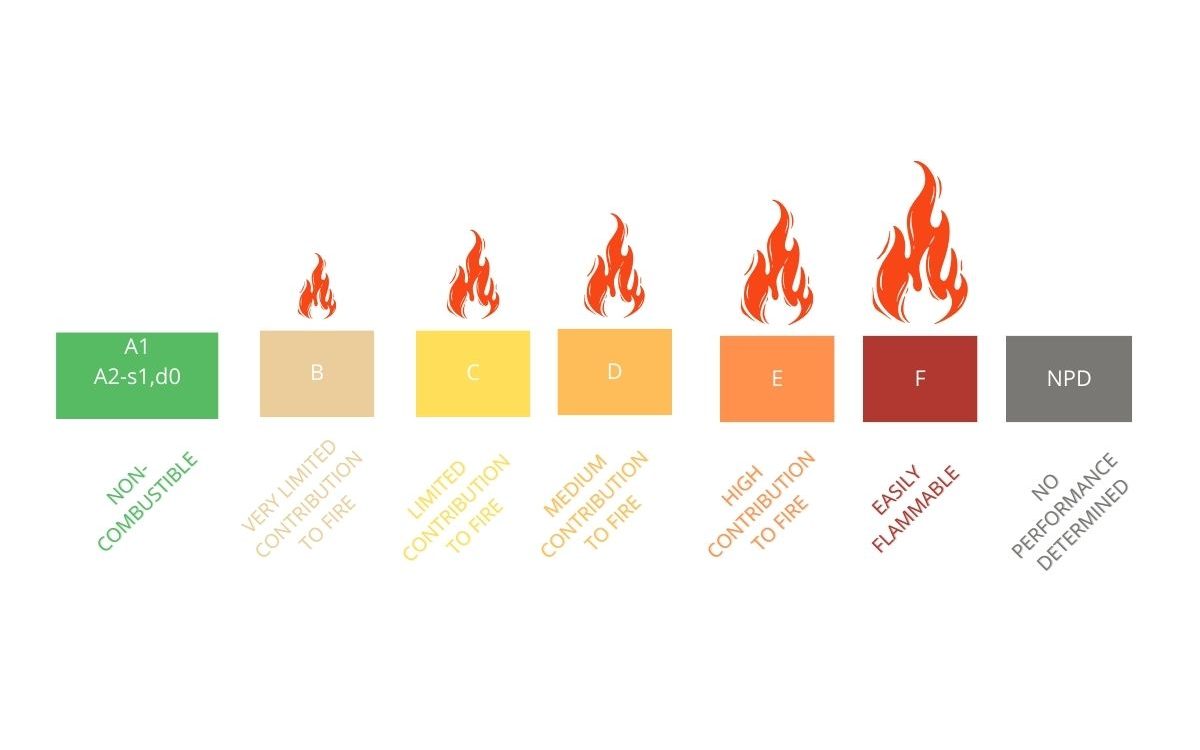The importance of fire resistance classification: a complete guide

Fire resistance classification is a crucial aspect of building safety, ensuring structures can withstand fire hazards and protect occupants. At Dabedan, our commitment to safety extends to understanding and implementing effective fire resistance measures. In this comprehensive guide, we will explore the essential factors in fire resistance classification and their practical applications in building design and construction.
Essential factors in fire resistance classification: A comprehensive analysis
Fire resistance classification relies on standardized testing to evaluate a material’s performance under controlled fire conditions. This process, known as fire resistance testing, considers three crucial factors:
– Load-Bearing Capacity: This measures a material’s ability to maintain its structural integrity during fire exposure. Whether it’s a wall, floor, or roof, the material must continue to support its designed load even when subjected to high temperatures and flames.
– Integrity: This assesses a material’s ability to prevent the passage of flames and hot gasses through its structure. In simpler terms, can fire or excessive heat pass through the material and ignite combustible elements on the other side?
– Insulation: This evaluates a material’s capacity to limit the temperature rise on the unexposed side during fire exposure. Effective insulation helps prevent the escalation of fire and limits damage to surrounding areas, providing valuable time for evacuation and firefighting efforts.

Importance of Understanding Fire Resistance Ratings
Fire resistance ratings, often abbreviated as FRR, are assigned to building materials based on their performance during fire resistance testing. These ratings, typically denoted in hours (e.g., F90, meaning the material can withstand fire for 90 minutes), play a vital role in several aspects:
– Building Codes and Regulations: Building codes and regulations often mandate the use of specific fire resistance ratings for various building components in different occupancy types. This ensures a minimum level of fire protection in various structures.
– Passive Fire Protection Systems: Fire-resistant materials with high FRRs are essential for designing and implementing passive fire protection systems. These systems, such as fire-resistant walls, doors, and compartments, help contain fires and prevent them from spreading rapidly, allowing for safe evacuation and minimizing property damage.
– Enhanced Building Safety: Understanding fire resistance ratings enables architects, engineers, and construction professionals to make informed decisions about material selection, contributing to the creation of safer built environments for occupants.
How Fire Resistance Classification Works:
Fire resistance classification is established through standardized testing procedures, such as exposing building materials to a standard fire curve in controlled laboratory environments. The fire resistance period of a material is determined by measuring how long it can withstand the standard fire exposure while maintaining load-bearing capacity, integrity, and insulation. Once a material fails any of these criteria, the fire resistance test is stopped, and the duration of successful performance is recorded as its fire resistance rating.
The fire resistance period of a material is determined by measuring how long it can withstand the standard fire exposure while maintaining the three critical factors mentioned earlier (load-bearing capacity, integrity, and insulation). Once a material fails any of these criteria, the fire resistance test is stopped, and the duration of successful performance is recorded as its fire resistance rating.

What is the fire resistance period of materials?
The fire resistance period of a material refers to the duration it maintains its structural and safety properties under fire exposure. This period varies based on material type and its ability to resist heat.
Factors Influencing Fire Resistance Ratings:
– Material Composition: The inherent fire properties of the material itself play a significant role. For instance, non-combustible materials like concrete generally exhibit higher fire resistance ratings than wood.
– Material Thickness: Thicker materials generally offer greater resistance to fire penetration and heat transfer, leading to improved fire resistance ratings.
– Density and Porosity: Denser and less porous materials provide better barriers against flames and hot gases, typically resulting in higher fire resistance ratings.
– Additives and Treatments: Fire retardant additives and treatments can significantly enhance a material’s fire resistance by delaying ignition, promoting char formation, or limiting heat transfer.
Common Testing Methods for Fire Resistance:
Several standardized testing methods are employed to assess the fire resistance of building materials. A common example is the EN 13501-1 test standard established by the European Union. This test method evaluates load-bearing capacity, integrity, and insulation under a standard fire exposure curve. For textiles specifically, obtaining fire resistance certificates is crucial to ensure they meet regulatory requirements and contribute to overall building safety. (Discover common testing methods for textile fire resistance)

Applications of Fire Resistance Ratings:
Fire-resistant materials find applications in various building components, including:
– Walls and Partitions: Fire-resistant walls and partitions are essential for compartmentalizing buildings, preventing fire spread, and facilitating safe evacuation. Their selection is heavily influenced by fire resistance ratings.
– Floors and Ceilings: Floors and ceilings with adequate fire resistance ratings can prevent fire from spreading vertically through a building, allowing occupants on upper floors valuable escape time.
– Doors and Openings: Fire-resistant doors and other openings help maintain compartmentation and prevent smoke and fire from spreading.
Enhancing Fire Safety through Classification Systems:
Fire resistance classification plays a vital role in promoting fire safety within buildings. Here’s how:
– Informed Design and Material Selection: By understanding fire resistance ratings, architects, engineers, and construction professionals can make informed decisions about material selection for various building components. This ensures structures comply with building codes and regulations, promoting a minimum level of fire protection.
– Effective Passive Fire Protection Systems: Fire resistance ratings guide the design and implementation of passive fire protection systems. These systems, like fire walls, doors, and compartmentation elements, rely on materials with specific fire resistance ratings to hinder fire spread, allowing for safe evacuation and firefighting efforts.
– Regulatory Compliance: Building codes and regulations often mandate the use of specific fire resistance ratings for various building components depending on occupancy type and construction details. Fire resistance classification ensures compliance with these regulations, contributing to overall fire safety within a structure.
– Improved Public Safety: By promoting the use of fire-resistant materials and effective passive fire protection systems, fire resistance classification ultimately enhances public safety in buildings. This reduces the risk of fire spread, facilitates safe evacuation, and provides valuable time for fire response teams to reach the scene.
In conclusion, understanding fire resistance classification is crucial for ensuring safety and compliance in construction and design projects. From material assessment to safety standards implementation, each aspect contributes to creating safer, fire-resistant environments, protecting lives and property from the devastating effects of fire hazards.
Subscribe to our newsletter
Receive all communications in your email to stay up to date with our news, as well as news and advice about the sector.
Latest published articles
Do you need advice?
We collaborate with you to develop custom designs tailored to the needs of each project, creating the fabric according to aesthetic, quality, or usage requirements.
Get in touch with us, and we will advise you on our products, or request a free sample.




